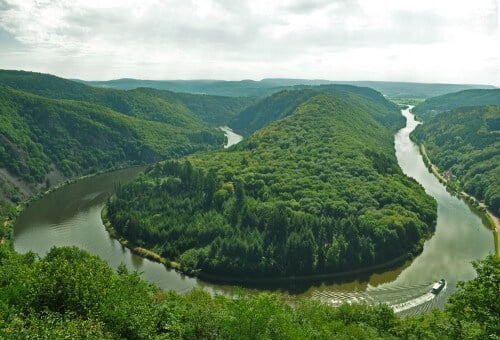In a new study published this month in the journal Geology, the researchers show how the pattern of the rivers that drain mountain ranges can 'record' distortions and relative movements in plate boundaries over geological time periods of millions of years, and how the current pattern of the rivers can be 'read' and deduced from it the rates and nature of the movement between the boards

In a new study published this month in the journal Geology, Dr. Liran Goren from Ben-Gurion University of the Negev and her partners Prof. Sebastien Casteltourt from the University of Geneva and Dr. Jan Klinger from the Institute of Earth Physics in Paris show how the pattern of the rivers that drain mountain ranges can "record" deformations and movements Relativity in plate boundaries over geological time periods of millions of years, and how the current pattern of the rivers can be 'read' and deduced from it the rhythm and nature of the movement between the plates.
The Earth's outer crust consists of giant broken plates that "float" on the viscous mantle of our planet. These giant plates are called tectonic plates and they make up the solid part of the world we live on, the one on which the oceans and continents extend. The relative movement between tectonic plates occurs at the boundaries between the plates. However, in many plate boundaries, it is not clear how wide the boundary area is and whether the relative movement is concentrated along large fault lines on which significant earthquakes occur or whether at least some of the movement is spread over wider strips of the Earth's crust.
Observations from elongated mountain ranges from different parts of the world show that rivers tend to flow mostly perpendicular to the mountain range, in the direction of the maximum slope. But what if the mountain range undergoes significant deformations? One theory holds that stream drainage systems are reorganized through stream impingement events so that the direction of flow will continue to be perpendicular to the mountain range, while an opposing theory holds that the river valley embedded in the crust will deform along with the crust and thus record the deformation.
In their study, the researchers concentrated on the northern part of the Dead Sea rift system, the plate boundary between the Sinai subplate and the Arabian plate. While in Israel most of the movement is horizontal, with the eastern side, Jordan, moving north in relation to the western side, Israel. In the Lebanon area, the plate boundary changes its character and becomes diagonal, meaning that in addition to the horizontal movement between Arabia and Sinai, the plates also approach each other and form the Lebanon mountain range.
Parallel to the elongated ridge of the Lebanon mountains, the copy of the Yamuna passes. This is an active replica, which can cause earthquakes, which is considered the plate boundary between Sinai and Arabia in the Lebanon region. In their work, the researchers identified a group of rivers draining Mount Lebanon into the Mediterranean that appear to have undergone rotation. Geomorphological analysis and mathematical modeling taught researchers how to read this unique river pattern. Goren and her colleagues suggest that the meandering rivers record horizontal distortions scattered over a strip about 30 km wide west of the Yamuna copy. That is, the movement between the tectonic plates in Lebanon is divided between movement on a large scale that can produce significant earthquakes and movement spread over a relatively wide strip, where the rocks are continuously sheared. The mathematical models also show that the rivers function as a relatively reliable 'recording tape', because the rivers experience few river impoundment events that hardly affect their flow path.

2 תגובות
Alas for the language... a bad translation... the one who wrote did not read to check if he understood what he wrote, but where are others who are supposed to check before releasing...
interesting …
Can you just explain what it is to "'record' distorted"?
Or: "deformed fetus"?
Maybe you mean distortions?